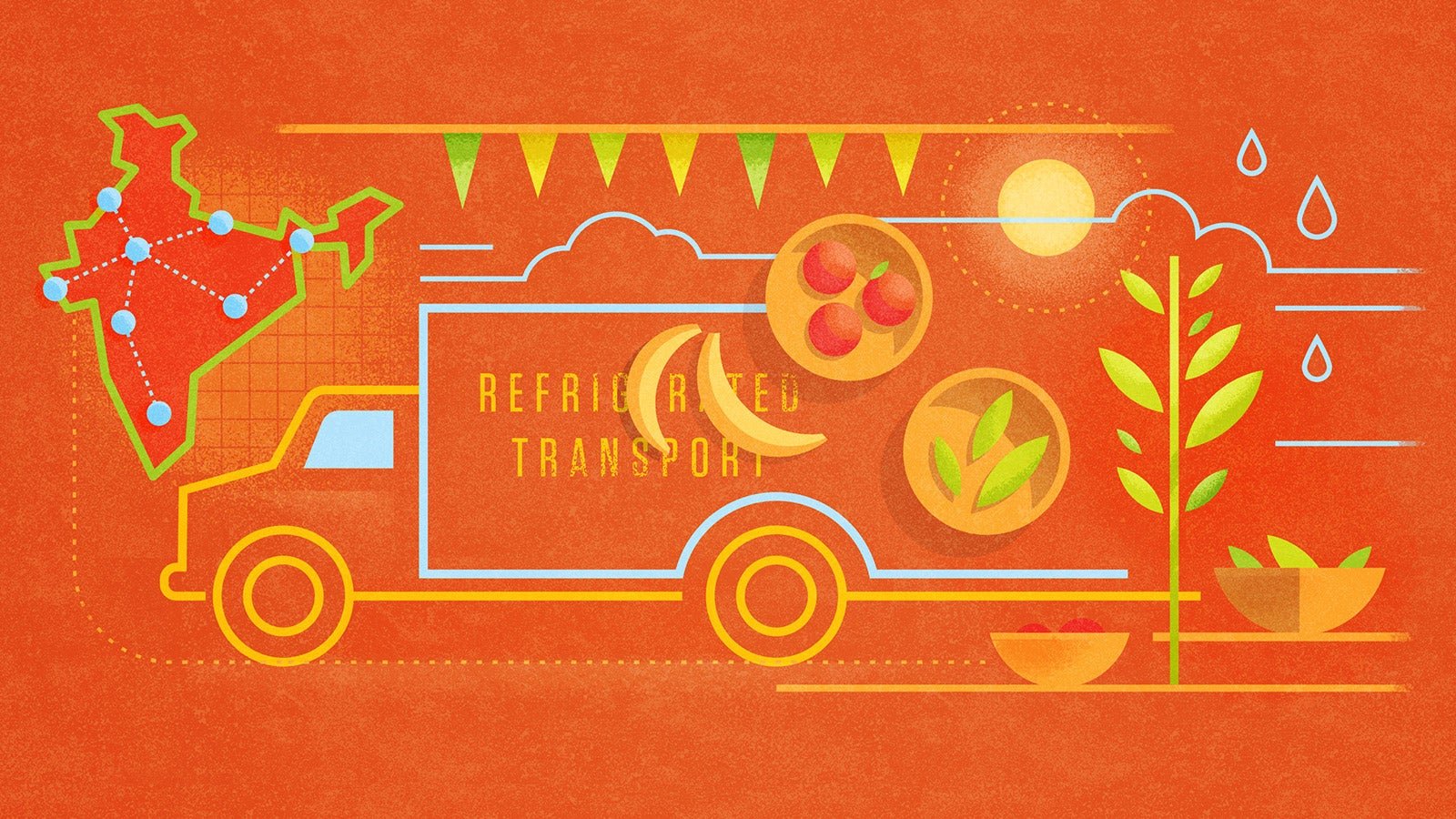The future of refrigeration in India
Americans experience a certain magic every time they step into a supermarket. We eat fresh food year-round. Avocados, tomatoes, and summer squash are available in winter. Bananas, raspberries, and blueberries shipped thousands of miles from tropical countries arrive on shelves on the cusp of ripening. Even finicky and highly perishable lettuce sits on display as if freshly picked, though it was harvested weeks before, then shrink-wrapped and cooled while it was still in the field.


Americans experience a certain magic every time they step into a supermarket. We eat fresh food year-round. Avocados, tomatoes, and summer squash are available in winter. Bananas, raspberries, and blueberries shipped thousands of miles from tropical countries arrive on shelves on the cusp of ripening. Even finicky and highly perishable lettuce sits on display as if freshly picked, though it was harvested weeks before, then shrink-wrapped and cooled while it was still in the field.
Perfect, fresh, and always-available food is taken for granted by consumers in rich countries and in an increasing number of developing nations. In India, however, this modern reality is still out of reach. Walk through a neighborhood in India and you might feel right at home in a thoroughly modern environment. But take a trip through the country’s food-supply chain, and you’ll find yourself in the throes of a developing-world economy: agriculturally abundant but still struggling to feed its massive and increasingly affluent consumer population.
India is the world’s leading producer of milk and the second-largest producer of fruits and vegetables, but the country watches nearly 20 percent of that yield—$10 billion worth of food—go to waste for lack of a food-supply infrastructure that can keep its food fresh from farm to table. Building that infrastructure is key to India’s food security and public health for its more than one billion citizens, as well as to its future as a world-class economy.
But a modern food system relies on a comprehensive cold storage supply chain—an interconnected system of high-tech facilities and transport vehicles—also known as a “cold chain.” Its network involves chambers that delay and then trigger ripening, long-term cold storage warehouses capable of preserving produce for weeks or months, refrigerated trucks and cargo ships, and coolers that keep food in grocery stores properly chilled.
Today, just 4 percent of India’s fresh produce is transported in a cold chain. The rest has to be delivered locally and eaten quickly or it simply goes to waste. For that to change, the country faces the steep challenge of doubling its cold chain capacity, from 30 metric tons of food to 60. Adding to the challenge, more than half of India’s 6,300 cold storage facilities are concentrated in just four of the country’s 29 states.
India is expected to see an investment of between $6 billion and $10 billion over the next five to 10 years, excluding the cost of land and a few additional components. It has already established a National Centre for Cold Chain Development as a hub to train the country in strategic development as well as to train the country’s cold chain stakeholders. Partnerships with technology leaders like Emerson Climate Technologies are also enabling the development of India’s new cold chain.
“The policies of the Indian government are bringing investments from international players, international experience, international design, and international technology into this market,” says Abel Gnanakumar, Emerson’s director of refrigeration marketing in Asia. By looking at how more-developed economies have tackled this challenge, he says, “they can utilize the global experience of the developed world and get it right quickly.”
India faces a more daunting challenge with its cold chain than do other parts of the world. Much of the country experiences extreme weather, so cooling technologies are more energy-intensive than in milder climates. Peak power outages are also routine, often forcing cold rooms to operate off costly backup generators. All of which is to say that energy efficiency is paramount. To address that issue with regard to compressors—a key, energy-intensive technology in chilling and freezing—Emerson has introduced Copeland Scroll compressors, which are designed specifically for refrigeration and therefore significantly reduce energy consumption.
The company has also invested in a cold chain and distribution center in Chakan, Pune, about 90 miles east of Mumbai, which provides project design and planning, locally develops and builds the latest cold chain equipment, and provides training and aftermarket service support. The facility helps cold chain operators and contractors build the most technologically advanced, reliable, and efficient cold room possible and maintain it at optimal cost and energy levels.
As cold chain development expands into more remote areas, India will continue to partner with international companies like Emerson, training cold storage operators and farmers in India’s smaller cities and villages on best practices for the handling of perishable produce and in the operation of new technology.
By adopting the world’s most advanced technology and beginning to integrate and educate the links in its new cold chain, India is already beginning to close the gap on its neighbors and competitors in solving the problem of food waste, which is key to realizing its potential as a major player in the world economy.
“We are trying to build from the foundation,” says Emerson’s Gnanakumar. “The major items that India is trying to tackle in terms of reducing food losses are developing an overarching strategy for cold chain and food transportation. When that comes into place, everything will start to develop.”
This article first appeared on Emerson.com and was not written by the Quartz editorial staff.